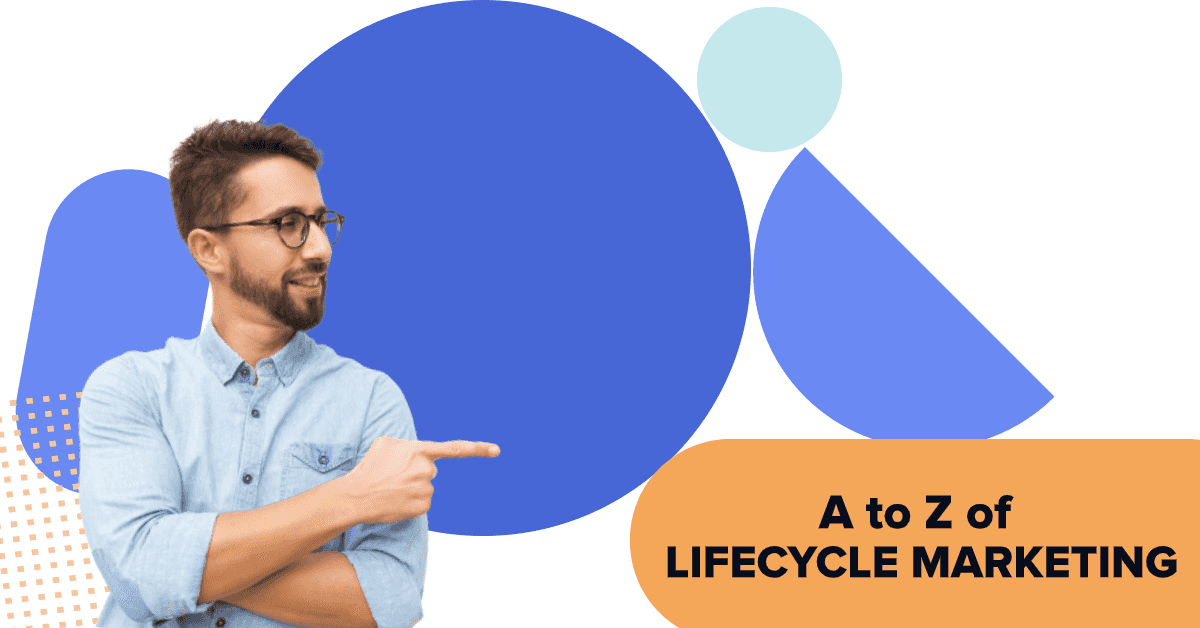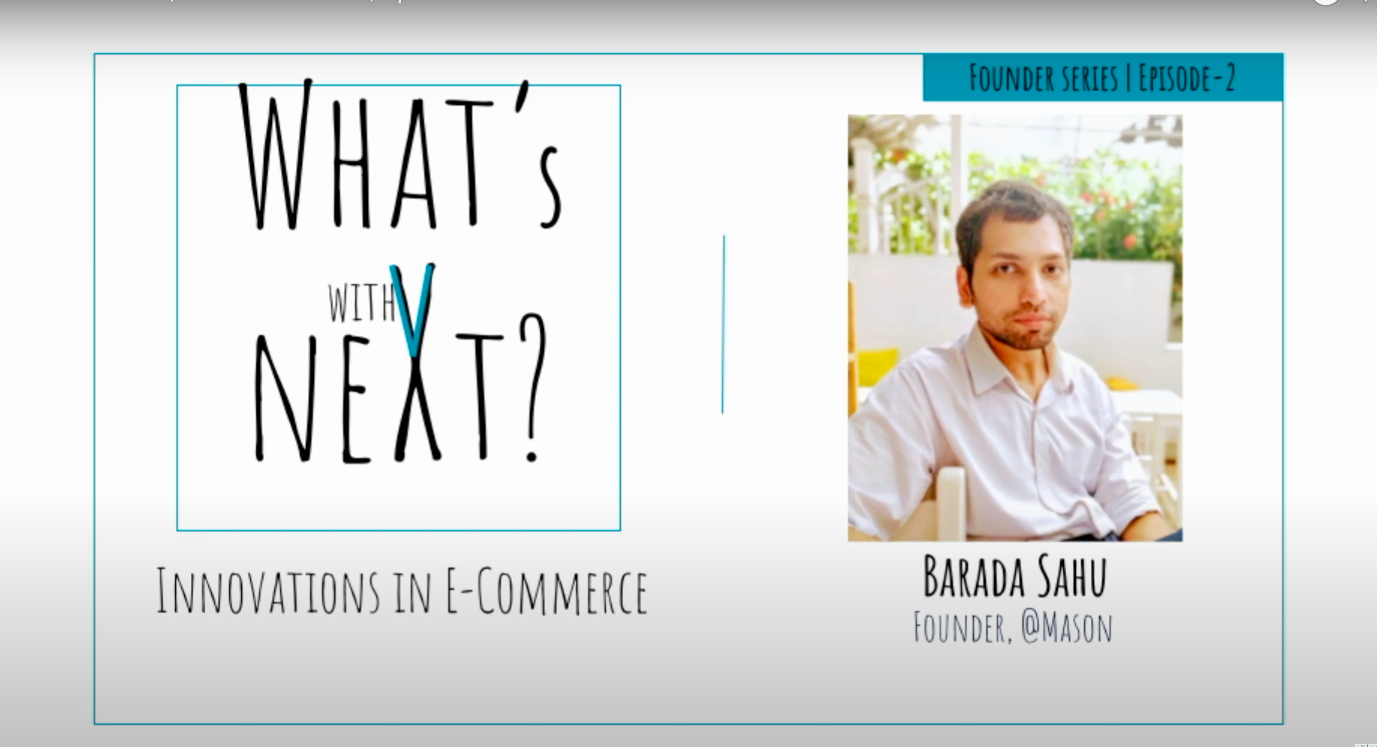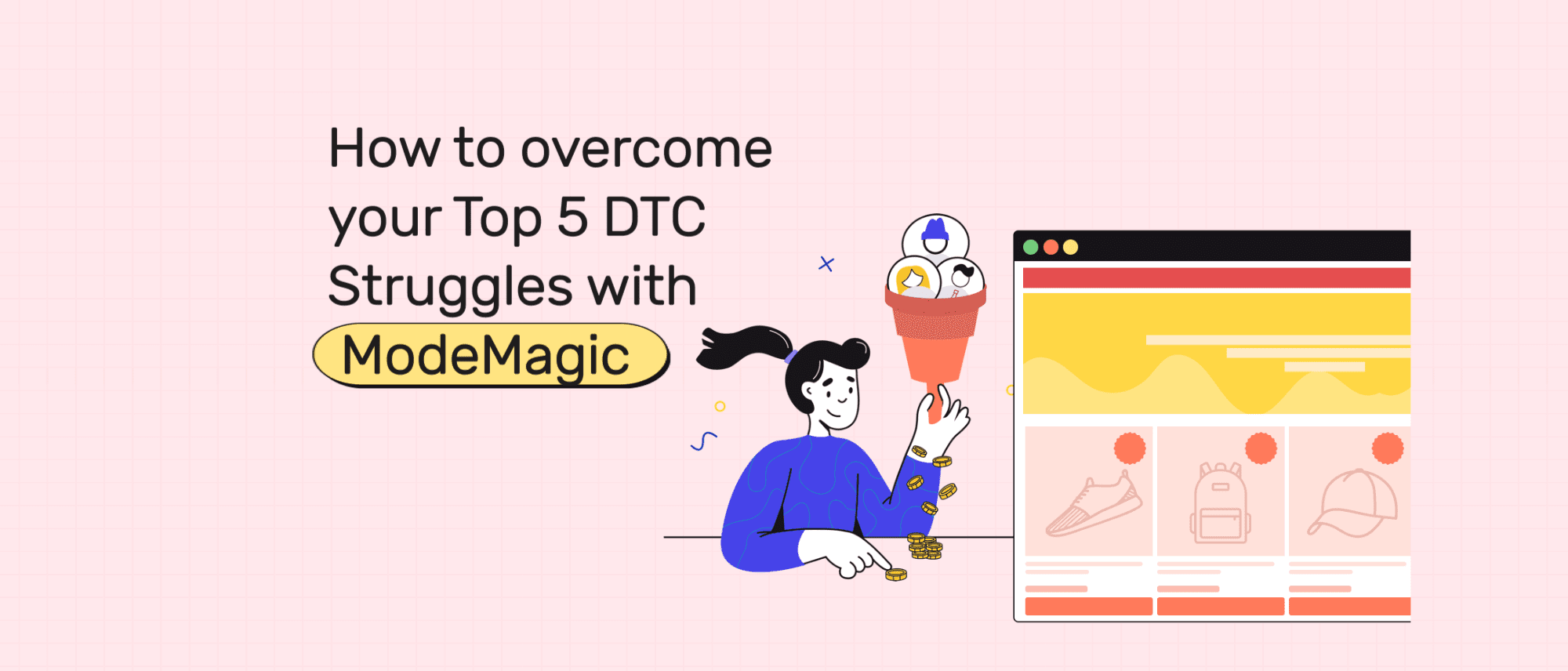Remember when you checked out that T-shirt on Amazon and now you can’t stop seeing ads of it? You’ve probably even received an email about it – just check your ‘Promotions’ tab.
That’s basically Amazon trying to woo you into showing more interest and converting your interest into a purchase.
But you know this, you’re a marketer (or a store owner of eCommerce businesses). So what are you missing when it comes to ecommerce lifecycle marketing?
The bigger picture, our friend.
eCommerce lifecycle marketing is all about looking at the customer’s buying journey as a whole lifecycle, and creating little touch points along the way. These touchpoints will aim to push them from stage to stage of their journey or lifecycle, and ideally keep them coming back to become brand loyalists.
Is it really that important?
Once in a while, the marketing industry throws up a new trend in strategy... e commerce life cycle marketing might seem like one such example, but it’s actually been around for ages, as the innovative alternative to the marketing funnel.
For centuries, marketers visualized their prospective customers and lead pool getting sharper and more concentrated as they made their way through a buyer’s “funnel”. Today, with the internet, we know that no sales journey is linear - you simply cannot apply the straightforward marketing/sales funnel to today’s multi-sensory, multi-touchpoint buying journey.
And so came in lifecycle marketing, an approach that is based on the continuous consumer cycle of Awareness - Interest - Purchase - Repeat - Loyalty.
The 5 eCommerce Lifecycle Marketing Stages (and what to do with them)
Stage 1: Awareness
Let’s bring in everyone we can that could be a potential customer! Marketers and retail or wholesale business owners are aware of this phase of the buying journey - awareness, AKA “spreading the word”.
At this stage in the lifecycle of the customer, you want to draw their attention, get them familiar with your brand and products, and really get them to click with you.
Marketing channels that help you build awareness:
- Social media
- Advertising platforms
- Events (online and/or offline)
- Blog posts
- Search engines
- Television & radio
When creating all the collateral for these channels, you want to focus on:
- Sticking to your brand guidelines - think logo size & placement, brand colours, brand fonts, and brand tonality
- Being consistent with all platforms - don’t just pick one channel, like social media, and stick with it. Do blog posts, search engine optimisation and advertising too!
- Creating a brand user experience - whether you’re a fun e-commerce store for teenagers, a clean beauty one for conscious buyers, or a gardening store for green enthusiasts...use colours, images and content to create the customer experience with which your audience will resonate.
- Measuring impact! How do you know if you’re building more awareness? You keep track of a certain set of metrics. Fronetics shows us 4 ways to measure brand awareness with this very helpful infographic:
Try Mason - your partner in building awareness with amazing branded content
Stage 2: Interest
Now that people are aware of your products, in the next phase of your ecommerce strategy- you need to keep them interested. This is usually the longest and most complex part of the life cycle, since people can go back and forth, change their minds, explore the competition and generally take it slow before buying a product. That’s why you need to come up with 1001 ways to maintain their interest!
Marketing channels that will help you keep customers interested:
- Your website
- Social media
- Email marketing
- Advertising platforms (for re-marketing)
- Communities & forums
When creating collaterals to keep your audience’s interest, you need to keep in mind:
- The audience has already seen the collateral you’ve put out there earlier - give them content that’s a level deeper and draw in them in
- Stay on trend: what’s on trend, what’s new with your product lines? Change up your templates and use your colours in new ways to draw continued attention.
- Keep creating fresh content - the more repetitive you are in your efforts, the more effective it will be. In fact, social media platforms and Google Search use content freshness as one evaluation factor when recommending content to viewers.
We’ll make a strong case for content marketing here: Using channels such as social media, email marketing and your website, to distribute content in formats such as videos, blog posts, newsletters and success stories, to keep potential customers interested. One way of planning your eCommerce strategy for content distribution is to use the Paid, Owned, Earned media segmentation. Make sure you’re creating and publishing content across all three!
We’ll let GrooveHQ explain it to you with this helpful graphic:
Stage 3: Purchase
Ah, finally - the most important stage for eCommerce businesses. This is when you convert interested store visitors into customers. At this stage in the lifecycle, you need to go strong on impactful calls-to-action and push as many people as possible to actually check out. We use the word ‘push’ lightly, but remember - you’re competing for your visitors’ time and attention, and the power of procrastination is strong.
Marketing channels that will help you convert store visitors into customers:
- Advertising channels (for re-marketing)
- Email marketing
- Chatbots and other communication channels
- Social media shopping
We live in a shop-anywhere economy today. You want to be able to allow your customers to add-to-cart and check out as quickly as possible wherever they are. One great way to do that is to create vibrant, product-heavy social posts with shopping links. Another way to do that is to run contextual ads that target users where they are in the purchase phase. For example, if they’ve added products to cart and then dropped off, you could show them ads that say “The pieces you love are some of our most popular! Get them before they’re gone.”
While creating these collaterals to convert customers, keep in mind:
- This is not the time for subtlety - use bold CTA buttons and focus on the same products that they’ve shown interest in
- Use tactics such as social proof (“Grab our bestseller!”), FOMO (“Only a few left!”) and customer reviews to speed up the conversion
- Don’t repeat content and templates that you’ve already used earlier - customers will have seen them and developed a blindness towards them
Stage 4: Re-purchase
You spend the most amount of time and resources trying to get new customers to buy your products. A much better use of your resources is to increase average order value or, to increase reorders! Your customers enter this phase as soon as they complete their first purchase - you can start sending out emails with similar products as a gentle reminder of the rest of your range.
If your product is the kind that needs continuous replenishment (think cereals, body moisturizers, etc.), send out timely reminders to stock up again, and subscription offers that will help customers save costs while you increase revenue.
Channels that will help you push for reorders:
- Email marketing
- SMS/text messaging/WhatsApp messenger
- Social media
When creating these collaterals to boost reorders, keep in mind:
- Your creatives should now talk to your customers as if they’re part of the family. They know all about your products, so don’t pitch them again! Go for a warmer, more comfortable tone and familiar brand templates.
- Be contextual - you can’t increase reorders with mass emails, for example. Segment your customers by product, by purchase date and by cohort so you can create more relatable content.
- Offer added benefits for customers: Even on other marketing collaterals, make it a point to mention any offer (such as an added 10% off) for existing customers, in a visible font. This will help increase reorders + draw in people to turn into customers for the added benefits!
Looking to measure the increase in repeat purchases? Calculate repeat purchase rate with the formula below:
Stage 5: Loyalty
The ultimate goal for any brand is to have loyal customers - ones who’ll keep coming back to you and choosing you over your competitors, because you have delighted them. There are a few ways you can drive this, and, up until recently, there was an entire department dedicated to it called “customer success”. You might still have a customer success department today, but with channels such as social media, chatbots, forums and review sites, it’s now the entire company’s responsibilities to boost customer delight.
Channels that will help you boost customer loyalty:
- Social media
- Your website
- Chatbots
- Email marketing
- Text messaging
You might wonder how email can be used to boost loyalty - why not some well-timed happy birthday emails that offer an incentive of some kind? And when it comes to your website, you can use it in a number of ways...build a community on your website that will become a sort of hub for customers to keep coming to, slowly building loyalty. Or, you could offer a rewards program that runs off purchases made from your website. The trick is to combine loyalty-based initiatives with just the right channel for them. Businesses reaching these goals will be in a better position to attract and retain customers.
When creating content to boost loyalty, remember:
- Personalisation rules - you won’t be gaining any favour from emails that start “Dear Customer”, but “Dear Kylie”, or “How’s it going, Kylie?” will definitely bring the warmth. Keep track of customer's personal data and use it wisely.
- Frequency matters - you have to create a lot of content regularly, otherwise you won’t be able to maintain top of the mind recall.
- Be true to your brand user experience - remember the customer experience we spoke about in ‘Stage 1: Awareness’? Make sure you continue to deliver on that for your customers, to boost loyalty. Conscious beauty brands could create a buyback program (MAC does this although it may not be a 100% conscious brand), where they will take back used and empty bottles/makeup containers and give the customer a free lipstick in return. They recycle the containers they’ve gotten back, the customer gets something free and definitely wants to keep collecting containers to keep the cycle going!
Author Ruth Even Haim shares some good advice on Medium for increasing customer loyalty and retention, that can also be applied for stage 4 of the lifecycle - re-purchases.
Conclusion
Are you ready to create great content for each stage of the e commerce life cycle? If you need a starting point, allow us to suggest Mason - your partner in creating great content, right from inspiration and design to publishing. These ecommerce platforms will even ensure you’re constantly sticking to your own brand guidelines! Creating branded content has never been this easy and quick.
Armed with Mason and this blog post, marketers and business owners will be able to create branded content that resonates with your audience, boosts your sales and stays true to your brand!





